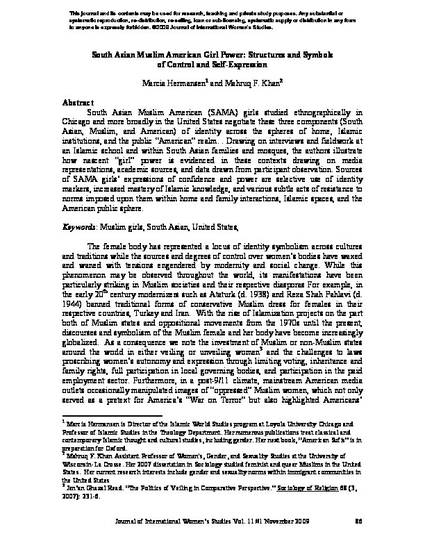
South Asian Muslim American (SAMA) girls studied ethnographically in Chicago and more broadly in the United States negotiate these three components (South Asian, Muslim, and American) of identity across the spheres of home, Islamic institutions, and the public “American” realm. . Drawing on interviews and fieldwork at an Islamic school and within South Asian families and mosques, the authors illustrate how nascent “girl” power is evidenced in these contexts drawing on media representations, academic sources, and data drawn from participant observation. Sources of SAMA girls’ expressions of confidence and power are selective use of identity markers, increased mastery of Islamic knowledge, and various subtle acts of resistance to norms imposed upon them within home and family interactions, Islamic spaces, and the American public sphere.
© Journal of International Women's Studies, 2009.

Author Posting. © Journal of International Women's Studies, 2009. This article is posted here by permission of the Journal of International Women's Studies for personal use, not for redistribution. The article was published in the Journal of International Women's Studies, Volume 11, Issue 1, November 2009.